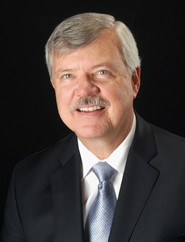The SEC must weigh potential negative impact of granting IEX protected quote status.
Mary Jo White, Chair of the U.S. Securities and Exchange Commission, said earlier this month that the agency will not advance any major changes this year to the fragmented system of trading stocks. Yet that intention could change should the commission approve the Investors’ Exchange (IEX) pending exchange application. IEX is currently an Alternate Trading System (ATS) that introduces a “speed bump” delay in all orders to and from its matching engine. This delay is an attempt to thwart high frequency trading algorithms and limit their presumed speed advantages. As an ATS, IEX’s innovative spirit should be applauded by all in the market, including its detractors. This type of market-based innovation goes to the heart of why Regulation ATS was implemented in 1998 – to advance market efficiency.
However, IEX’s bid to become an exchange is a different matter.
Dissenters to the application have noted two issues with IEX’s trading process that conflict with Regulation NMS, the operating rules that govern stock exchanges. Most early comments focused on the IEX broker’s proposed speed routing advantage compared with all other brokers – an element that IEX recently removed from its application in response to the criticism. The second issue is much more consequential and could, if IEX’s exchange application is approved, inject chaos into the way equity markets operate.

Keith Ross, PDQ ATS
If IEX becomes an exchange, rather than an ATS, all of its quotes will become protected. As a result of IEX’s speed bump, its quotes are delayed relative to the quotes at other exchanges – meaning that at the time the market at large sees them, they may no longer be live. This would represent a notable exception to exchange rules as they currently stand.
According to Regulation NMS, which created the National Market System of equity market venues in 2005, trades must be routed to the national exchange that has the best posted bid or offer. Quotes on exchanges are required to be posted without artificial delay and are deemed “protected” in an effort to streamline price discovery, incent the posting of liquidity, and ensure fairness among the many venues available for trading stocks. Today, 11 exchanges enjoy quote protection as a foundation of the National Market System. ATS quotes, on the other hand, are excluded from these rules and the exchange system of mandated order flow.
If approved as an exchange, IEX bids and offers would benefit from quote protection, a distinction that could lead to substantially higher order flow. However, because of the delay imposed by the IEX speed bump, its quotes may not be truly actionable. Compared to other exchanges, the quotes visible on IEX would be 700 microseconds behind.
Practically, that delay becomes a huge impediment to efficient markets.
Assume a stock order – directed to exchanges by high-speed smart order routing computers – recognized the best price at IEX. Since that price has already traveled through the speed bump, it is 350 microseconds old. However, by rule, the new order must be routed to that best price, where it is also subject to the 350 microsecond speed bump.
The result: 700 microseconds of delays that increase the likelihood that by the time both sides meet at IEX, the original bid or offer may have already traded or been cancelled. Effectively, these kinds of bait-and-switch quotes are “ghost quotes” – quotes that are broadcast as firm and protected, but ultimately not accessible.
IEX argues that its intentional speed bump is short and there are latent delays elsewhere in the current market landscape, so the bump should not hinder its exchange application. Consider the following possibility, however: IEX is approved as an exchange and garners increased volume because of the protected quote system. Other exchanges react to a loss of market share by introducing their own speed bumps, at varying rates, and soon there are four or five exchanges with intentional delays and protected quotes in their matching engines. In this scenario a smart order router attempts to trade with one protected ghost quote, doesn’t get filled, and quickly starts to chase other posted and protected quotes that are also long gone. Order routers cannot find a tradeable price, chasing ghost quotes through numerous speed bumps. The result is price discovery chaos.
The current National Market System has been extremely successful, nurturing the world’s most liquid and efficient equity markets. While there are certainly improvements to be made, changing the basic process that ties public exchanges together for the benefit of one venue would be a rash decision likely to negatively affect today’s market balance.
If Regulation NMS deserves another look, it would makes sense for the SEC to stay the IEX exchange application pending its review, and avoid the possibility of ghost quote chaos.
D. Keith Ross, Jr. is the CEO and chairman of PDQ Enterprises, which operates PDQ ATS. Prior to PDQ Enterprises, Ross was the CEO of Getco, LLC.














